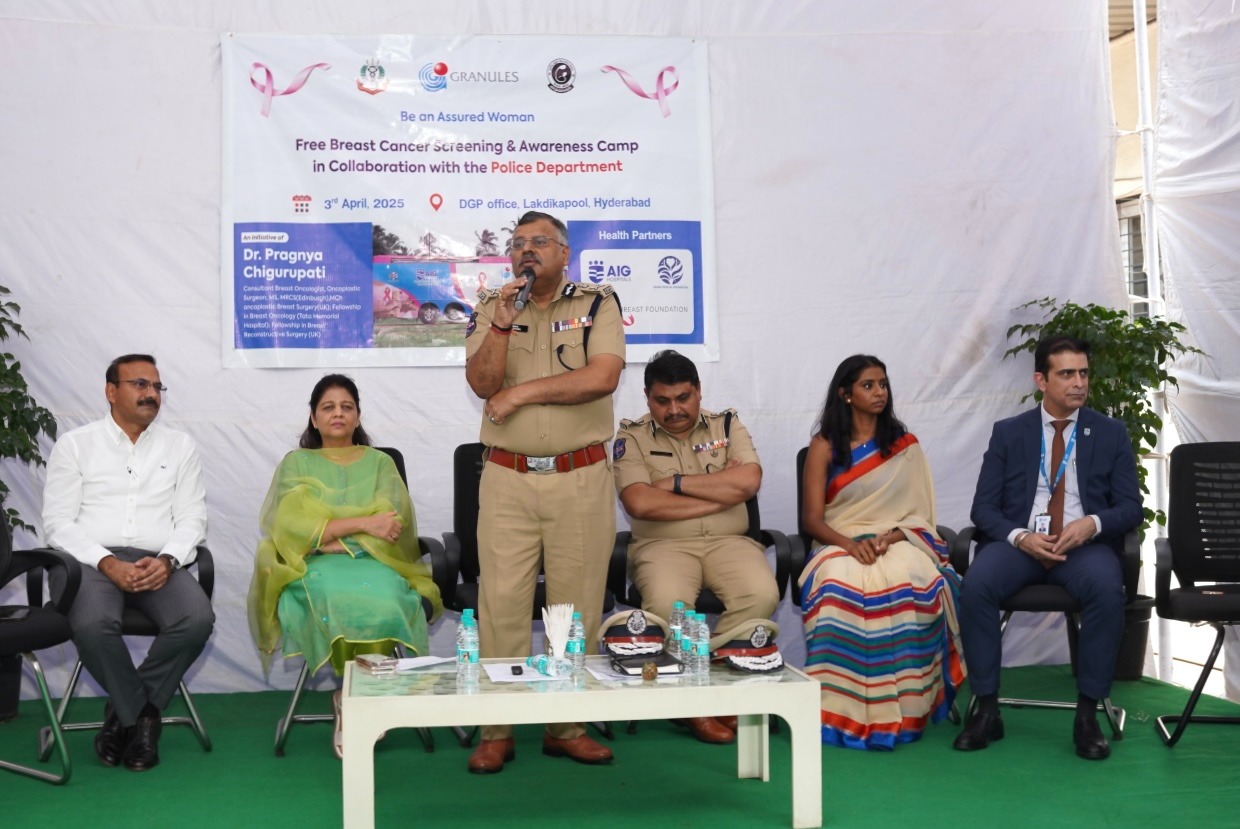International Day of Yoga
Dr J Anish Anand Consultant Internal Medicine, Apollo Hospitals, Jubilee Hills The International Day of Yoga is observed on June 21st every year. It was first proposed by the Prime Minister of India Narendra Modi, during his address

Dr J Anish Anand
Consultant Internal Medicine,
Apollo Hospitals, Jubilee Hills
The International Day of Yoga is observed on June 21st every year. It was first proposed by the Prime Minister of India Narendra Modi, during his address to the United Nations General Assembly in 2014. The proposal was later adopted by the United Nations, and since 2015, June 21st has been recognized as the International Day of Yoga.
The aim of this day is to raise awareness about the many benefits of practicing yoga and to promote its holistic approach to health and well-being. Yoga is an ancient physical, mental, and spiritual practice that originated in India and has gained popularity worldwide. It encompasses various techniques, including physical postures (asanas), breath control (pranayama), meditation, and ethical principles.
On the International Day of Yoga, people around the globe participate in various yoga-related activities such as group yoga sessions, workshops, seminars, and demonstrations. The day serves as an opportunity to highlight the importance of yoga in maintaining a balanced and healthy lifestyle.
The International Day of Yoga has contributed to the recognition of yoga as a valuable tool for promoting physical and mental well-being. It has also helped in fostering cultural exchange and understanding among different communities. The celebrations often involve people from diverse backgrounds coming together to practice and experience the benefits of yoga.
It’s worth noting that while the International Day of Yoga is observed on June 21st, yoga is practiced and celebrated throughout the year by millions of people worldwide.
Yoga is increasingly being recognized as a complementary and integrative approach to medicine. It has shown potential as a therapeutic tool for various health conditions and can be used in conjunction with conventional medical treatments. Here are some ways in which yoga can be considered as medicine:
Chronic pain management: Yoga has been found to be effective in reducing pain and improving function in individuals with chronic pain conditions such as lower back pain, arthritis, fibromyalgia, and migraines. It combines physical movement, stretching, and relaxation techniques to help alleviate pain and improve overall well-being.
Mental health disorders: Yoga has shown promise in managing mental health conditions such as depression, anxiety, and PTSD. The combination of physical movement, breath control, and meditation can help reduce symptoms, improve mood, and enhance mental well-being.
Stress reduction: Chronic stress has a significant impact on physical and mental health. Yoga provides tools and techniques to manage stress, including deep breathing exercises, mindfulness, and relaxation techniques. Regular practice can help reduce stress hormone levels, promote relaxation, and improve resilience to stressors.
Cardiovascular health: Certain types of yoga, such as gentle hatha yoga and restorative yoga, can be beneficial for individuals with cardiovascular conditions. Yoga’s emphasis on gentle movement, breath awareness, and relaxation can help reduce blood pressure, lower heart rate, and improve overall cardiovascular health.
Respiratory conditions: Yoga incorporates breath control techniques (pranayama), which can improve lung function, respiratory capacity, and breath awareness. It can be beneficial for individuals with respiratory conditions such as asthma, COPD (chronic obstructive pulmonary disease), and allergies.
Sleep disorders: Practicing yoga regularly can help improve sleep quality and manage sleep disorders such as insomnia. Certain poses and relaxation techniques promote relaxation and prepare the body for restful sleep.
Rehabilitation and injury prevention: Yoga can be used as a rehabilitation tool for individuals recovering from injuries or surgeries. It can help restore strength, flexibility, and balance while promoting a gentle and mindful approach to movement.
Enhancing overall well-being: Yoga’s holistic approach to health and well-being makes it suitable for individuals seeking a comprehensive approach to their health. It promotes self-awareness, self-care, and self-acceptance, fostering overall physical, mental, and spiritual well-being.
It’s important to note that while yoga can provide benefits, it should be practiced under the guidance of a qualified yoga instructor, particularly when using it as a therapeutic tool. Additionally, it’s crucial to consult with a healthcare professional if you have specific health concerns or if you plan to use yoga as part of your treatment plan.
International day of yoga
Yoga is our heritage passed on to us by our ancestors. Its the only exercise which is complete and heals and repairs both body and mind. Yoga stretches the muscles unlike any other exercise and helps blood reach the remotest if tissues and cells. It can be done by any age group, either gender and must be made a must in schools.
In my practice I have seen patients doing yoga regularly having lesser number of ailments than the general public who don’t do yoga. Yoga improves and regulates breathing, improves circulation, decreases mental tension and improves bone and muscle strength. Therefore, its a complete exercise. In my practice have seen some patients not doing better with modern medicine improve and better off with Yoga. Also to note modern medicine has become only medicine taking investigations and operations. Even general public thinks so. Exercise diet control, pollution free environment and mental health which our traditional alternative medicines offer like yoga have to be encouraged then only true health will come






